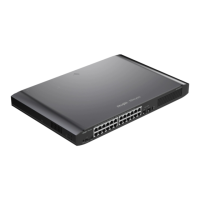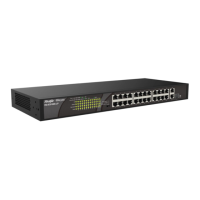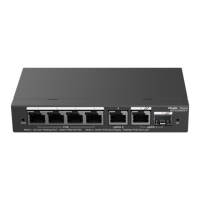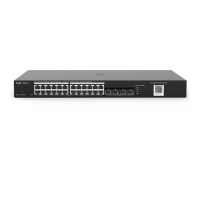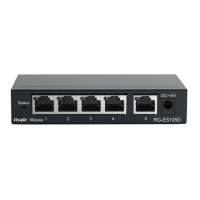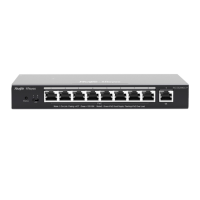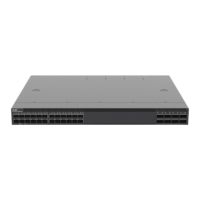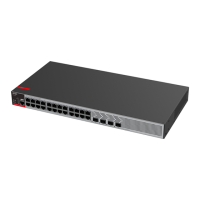Web-based Configuration Guide Security
101
7.2 Storm Control
7.2.1 Overview
When a local area network (LAN) has excess broadcast, multicast, or unknown unicast data flows, the network
speed will slow down and packet transmission will have an increased timeout probability. This is called LAN
storm, which may be caused by topology protocol execution errors or incorrect network configuration.
Users can perform storm control separately for the broadcast, multicast, and unknown unicast data flows. When
the rate of broadcast, multicast, or unknown unicast data flows received over a device port exceeds the specified
range, the device transmits only packets in the specified range and discards packets beyond the range until the
packet rate falls within the range. This prevents flooded data from entering the LAN and causing a storm.
7.2.2 Procedure
Choose Local Device > Security > Storm Control.
Click Batch Edit. In the displayed dialog box, select configuration types and ports, enter the rate limits of
broadcast, unknown multicast, and unknown unicast, and click OK. To modify or delete the rate limit rules after
completing the configuration, you can click Edit or Delete in the Action column.
There are two configuration types:
⚫ Storm control based on packets per second: If the rate of data flows received over a device port exceeds the
configured packets-per-second threshold, excess data flows are discarded until the rate falls within the
threshold.

